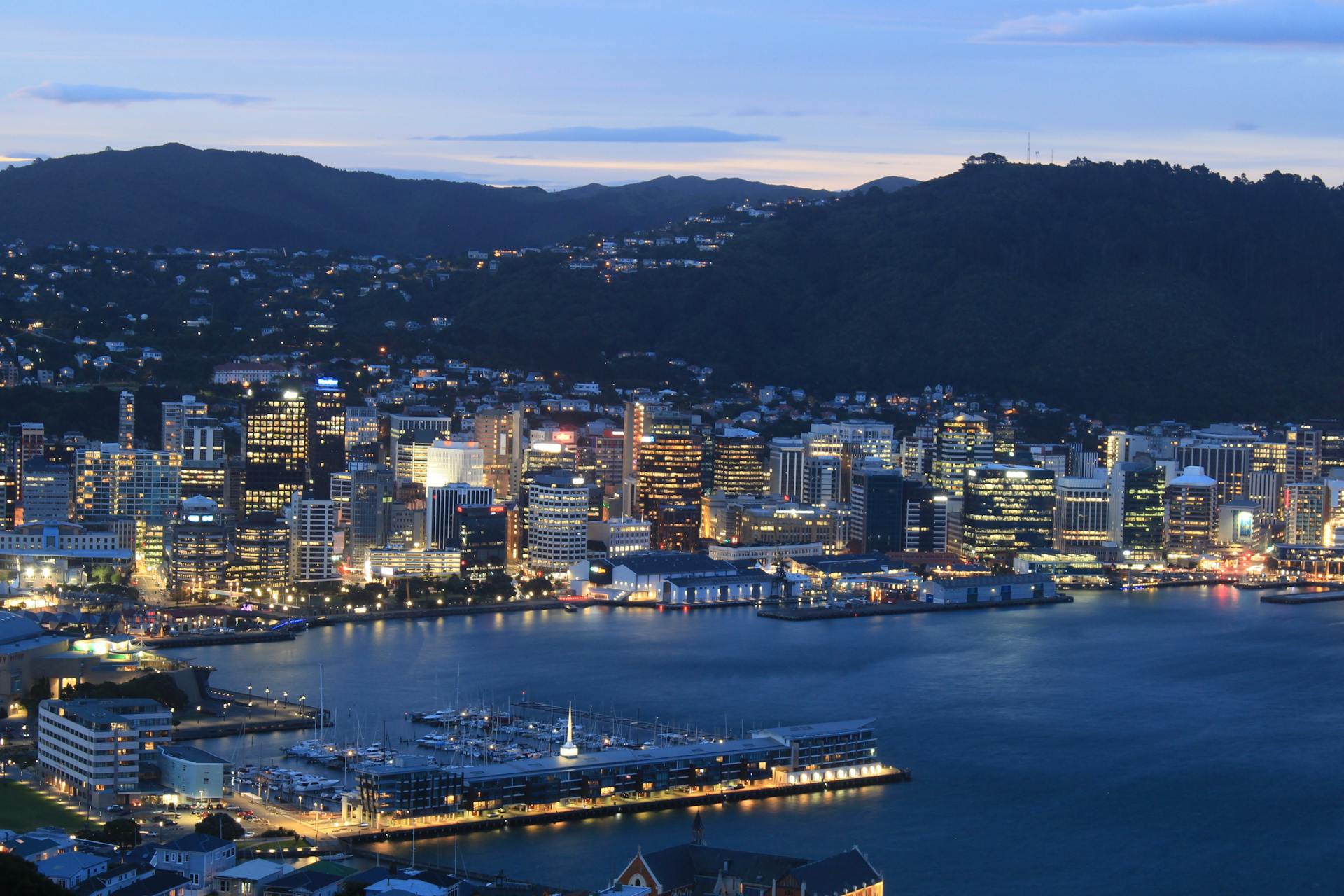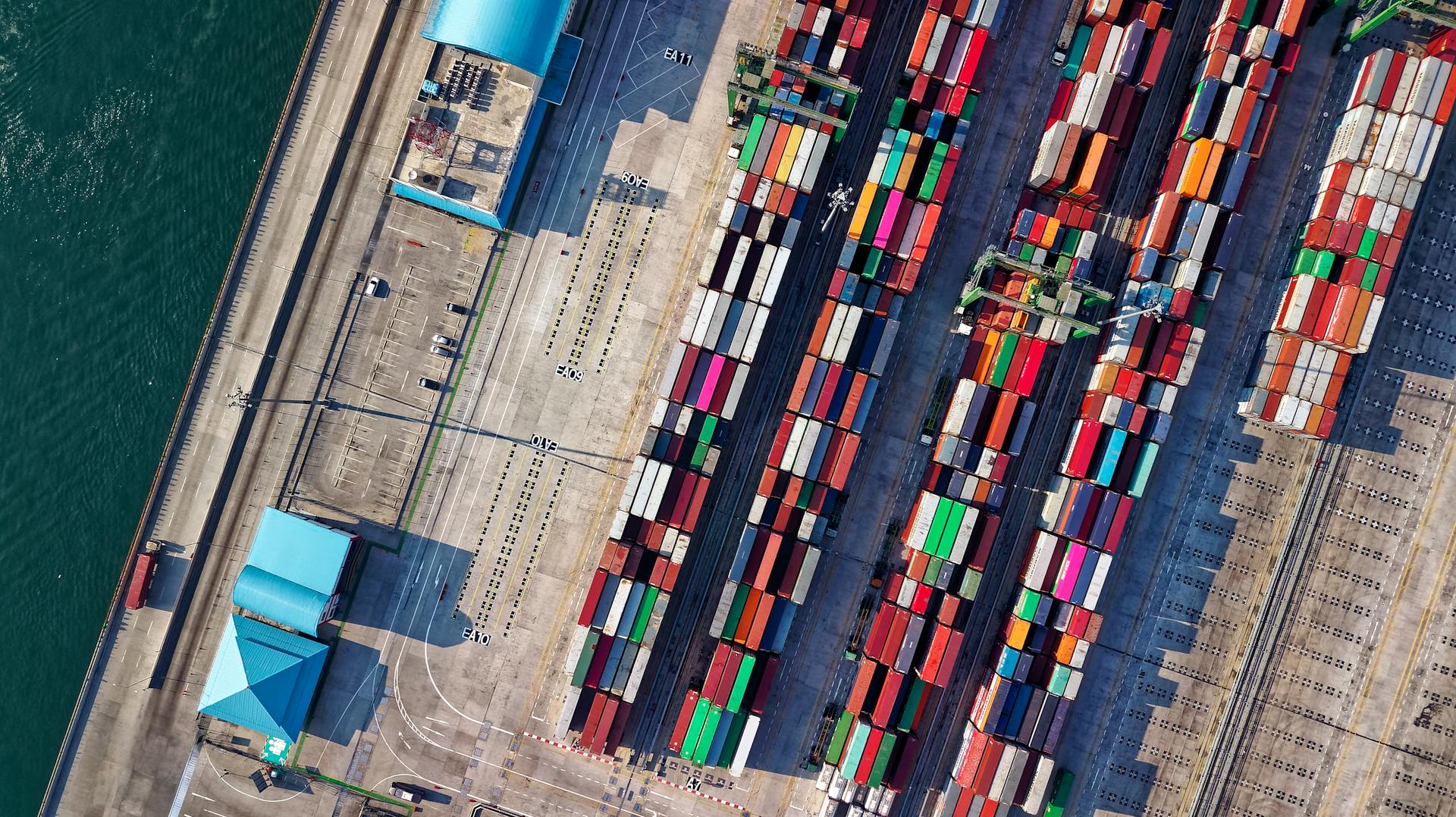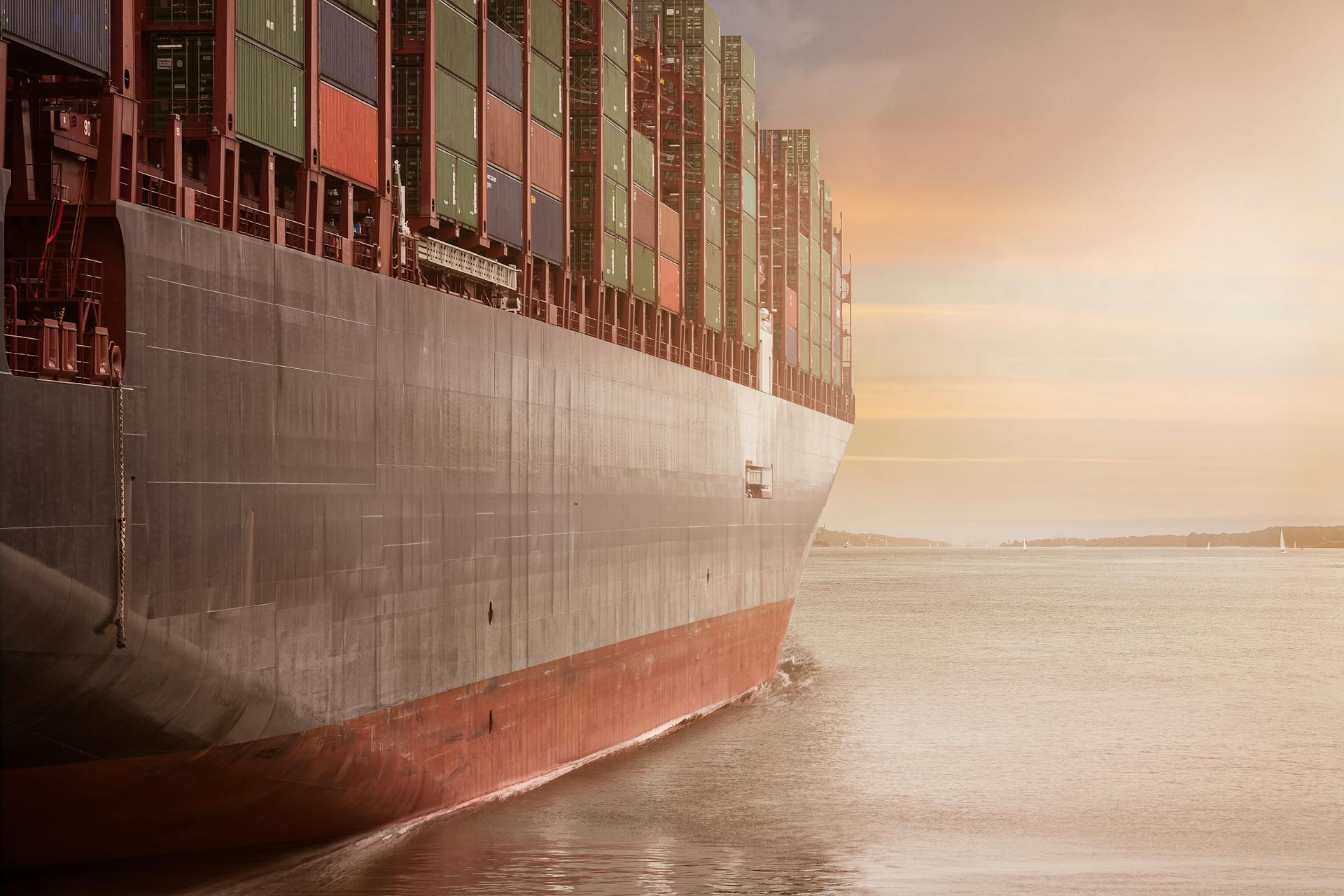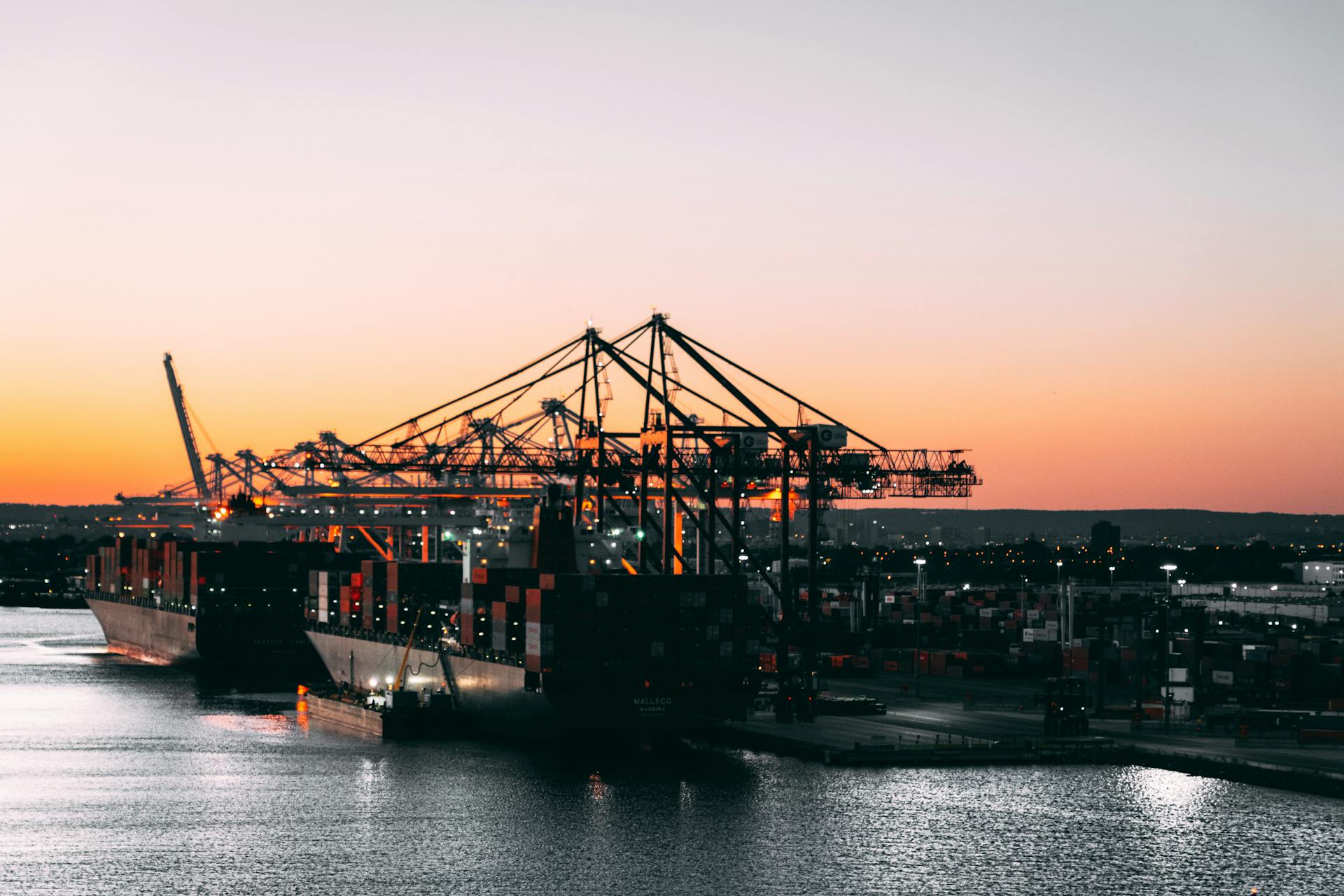
Port Kembla Harbour is a major shipping terminal in New South Wales, Australia. It's strategically located near the city of Wollongong and is a vital part of the region's economy.
The harbour is a deepwater port, with a draft of up to 14.5 metres, making it suitable for large vessels to dock and unload cargo.
Port Kembla Harbour offers a range of facilities and services, including a cargo terminal, a container terminal, and a bulk cargo terminal.
The harbour is also home to a number of warehouses and storage facilities, providing a convenient place for cargo to be stored and processed.
History
Port Kembla has a rich history that dates back to the early 20th century. Town subdivision began in 1908, and by 1921, there were 1622 residents.
The town's early growth was propelled by economic expansion, which continued to attract more people to the area.
Port Kembla derives its name from its proximity to Mount Kembla, a notable geographical feature in the region.
Coal Facilities
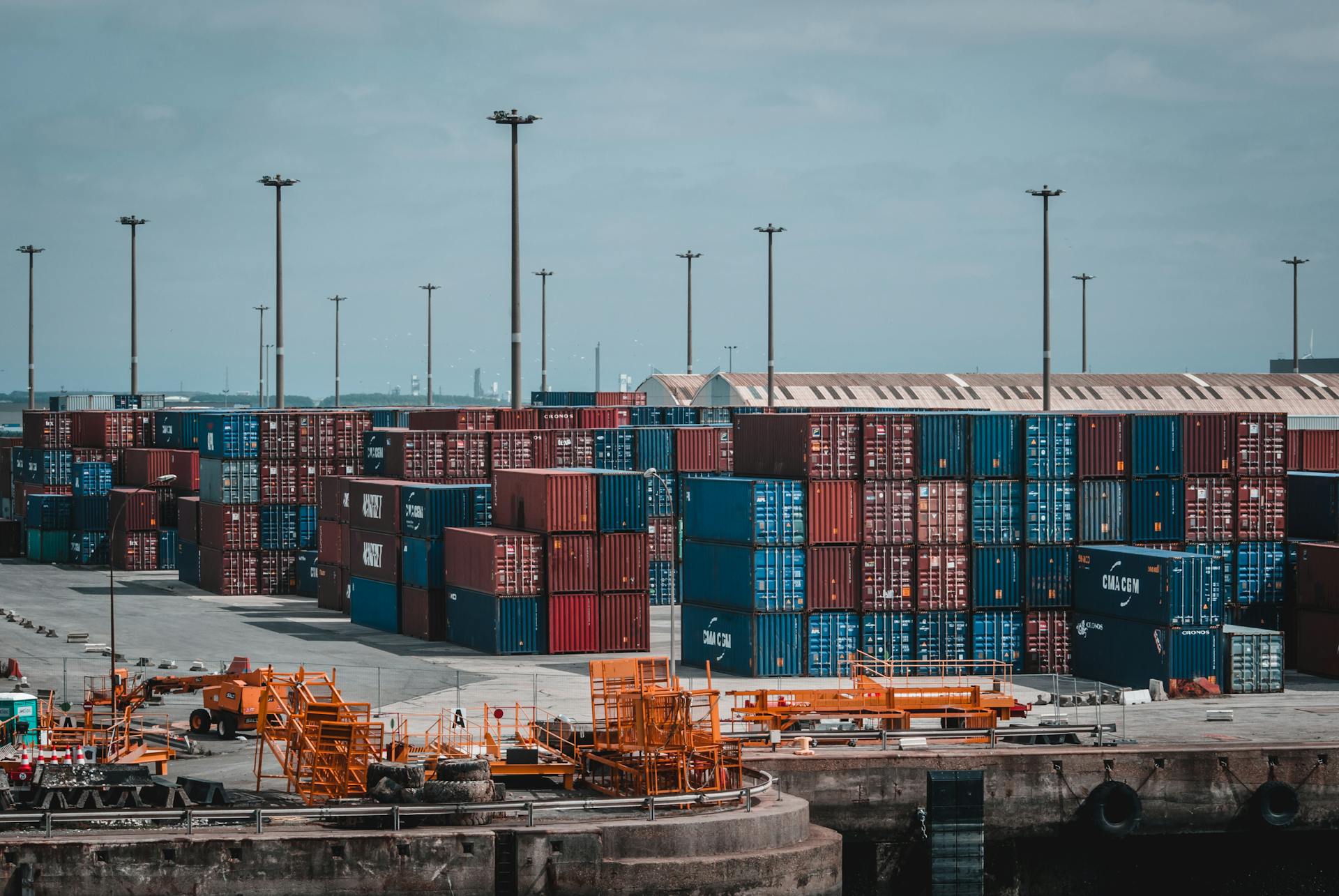
Port Kembla harbour is home to a significant coal facility, with the coal terminal operating in the inner harbour. The terminal services the southern and western coalfields of New South Wales, making it a key coal exporting facility on Australia's east coast.
The coal terminal operates two berths, with Berth 102 being the main exporting coal terminal. It has an available berth length of 300 metres and a depth alongside of 16.2 metres.
Berth 101 handles small quantities of bulk products such as coke and slag, with an available berth length of 200 metres and a depth alongside of 11.5 metres. Two ship loaders at the coal berth can load at a rate of 6,600 tonnes per hour.
Coal Jetties (1883-1963)
Coal Jetties were a crucial part of the coal shipping process, but they were largely a thing of the past by the mid-20th century.
Built in 1883, the Coal Jetties were designed to facilitate the loading and unloading of coal from ships. They were a series of piers and docks that allowed coal to be transferred from ships to trains or other vessels.
The Coal Jetties played a vital role in the transportation of coal during this time period, with many ships docking at the jetties to load up with coal bound for other parts of the country.
The Coal Facility
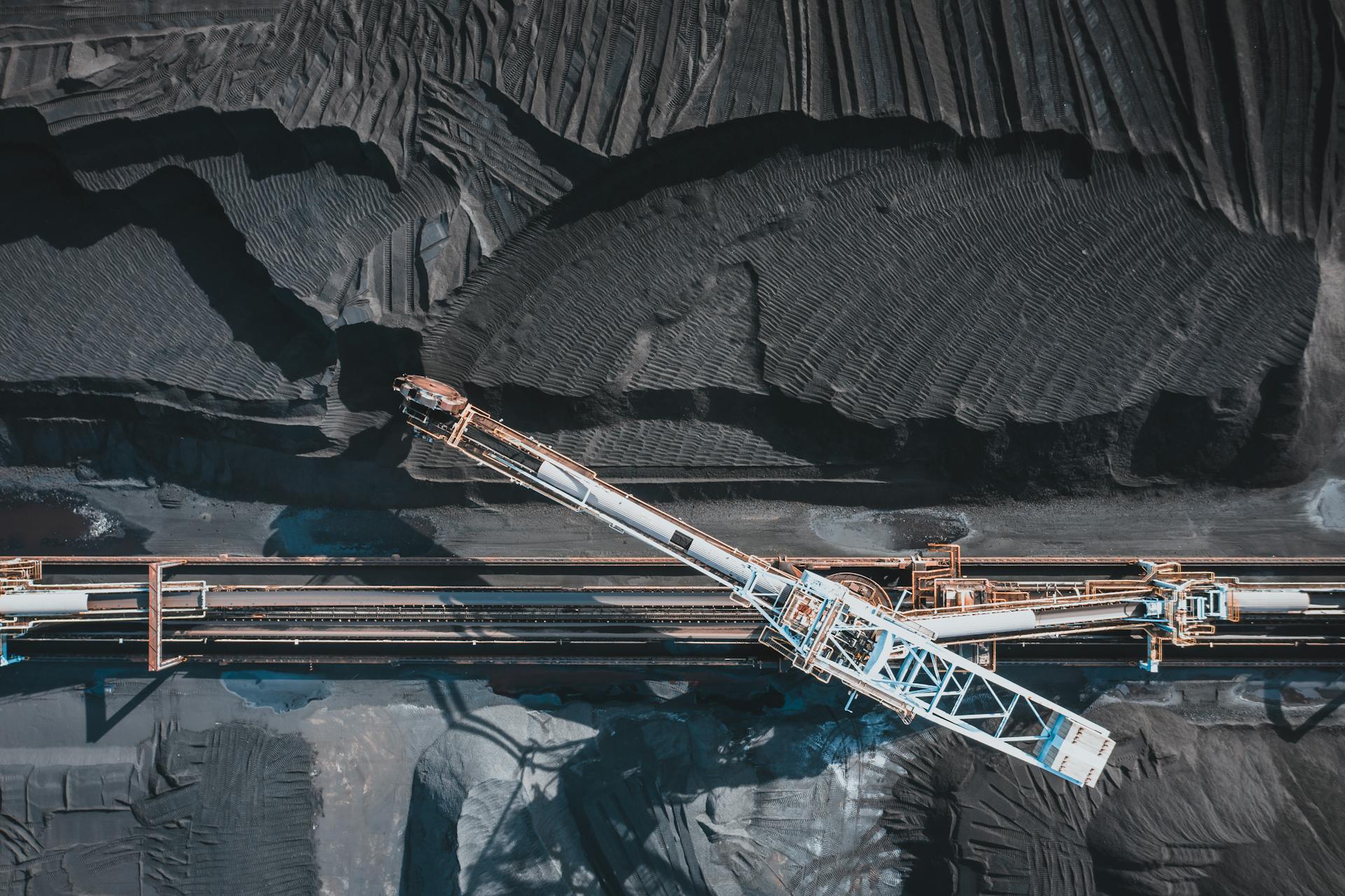
The Coal Facility at Port Kembla is a major coal exporting hub in Australia. It's located on the east coast and services the southern and western coalfields of New South Wales.
The facility operates two berths, Berth 101 and Berth 102, with Berth 102 being the main exporting coal terminal. It has an available berth length of 300 meters and a depth alongside of 16.2 meters.
Port Kembla Coal Terminal (PKCT) is operated under lease by a consortium of coal producers. It's a key coal exporting facility, and its two berths can handle a significant volume of coal.
Berth 102 is equipped with two ship loaders capable of loading at 6,600 tonnes per hour. These ship loaders are rail-mounted and have a hatch coverage of 235 meters.
Here's a breakdown of the main features of Berth 102:
The facility also has road and rail receival/discharge facilities, making it a convenient and efficient hub for coal exports.
Australian Iron Wharf
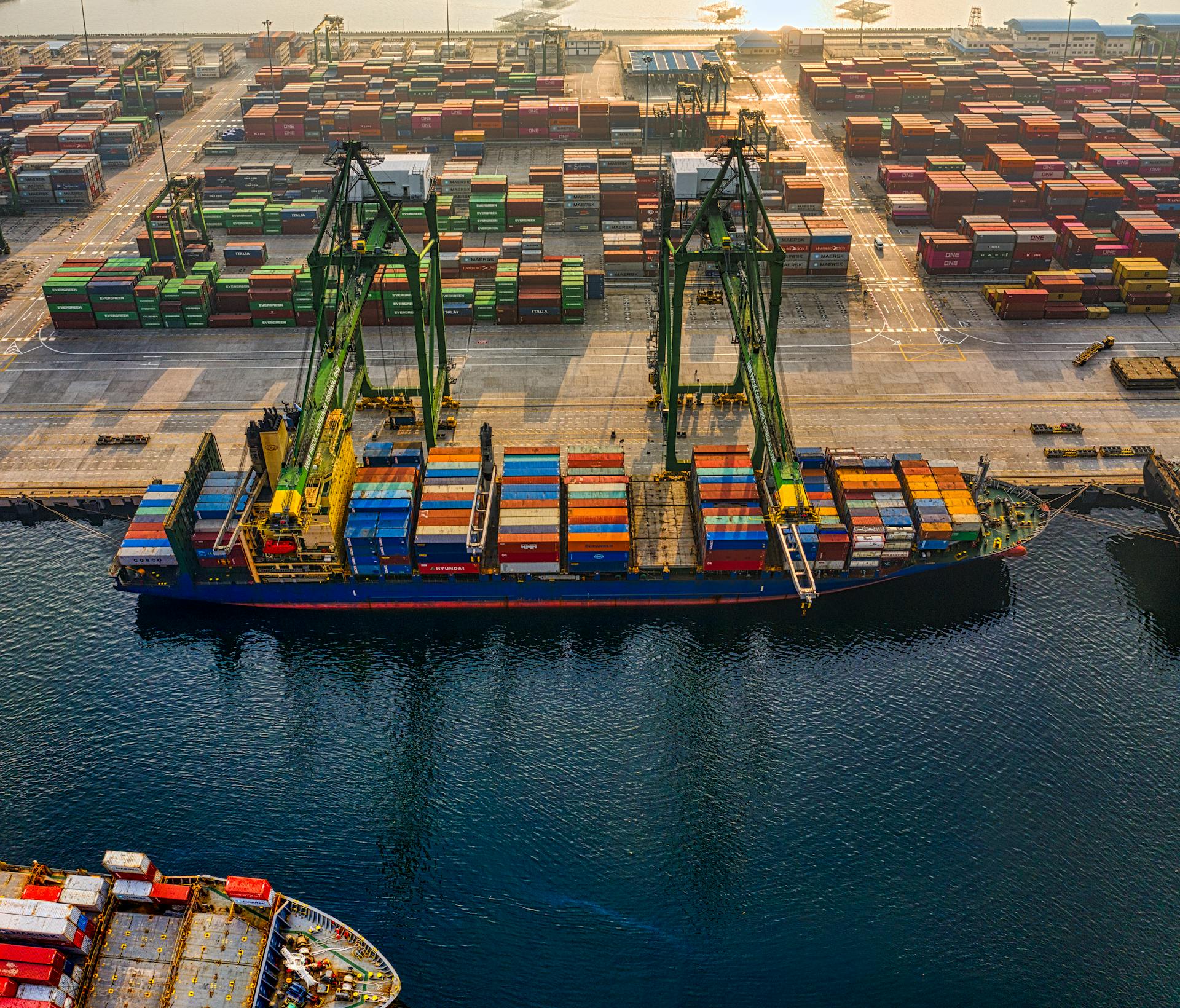
The Australian Iron Wharf was a crucial part of Port Kembla's coal facilities, and its history is quite fascinating.
Located south of the No.1 (Coal) Jetty, the wharf was completed in 1928 on land leased by Australian Iron & Steel from the NSW Department of Public Works. It was 838 feet long, including 323 feet of unloading berth.
The wharf had two railway lines and a pair of rails for the electrically-operated ore-unloading crane, which stood 101 feet above the wharf deck and weighed 400 tons. This crane could lift 20 tons at once, at a rate of 220 feet per minute, unloading 300 tons per hour.
The first shipment of iron ore for use in Australian Iron and Steel's new blast furnace was received from Whyalla, South Australia in 1928. This shipment of 5,500 tonnes had been mined by BHP at Iron Knob in the Middleback Ranges.
Curious to learn more? Check out: South Harbour, Helsinki
Grain and Bulk Facilities
Port Kembla harbour is home to a variety of grain and bulk facilities, making it a hub for the export and import of goods. The Grain Terminals in the Inner Harbour are operated by Graincorp and Quattro Ports, and have the capability to receive and dispatch products by ship, rail and road.
Graincorp operates the Port Kembla Grain Terminal, which is adjacent to Berth 104, a common user berth operated by NSW Ports. Quattro Ports operates the bulk grain handling facility adjacent to Berth 103.
Here are some key facts about the grain and bulk facilities in Port Kembla:
The Grain Terminal at Berth 104 has a total length of 300m and a depth alongside of 15.65m, and is equipped with 30 gas-tight self-emptying steel bins with a total capacity of 260,000 tonnes.
The Grain Heading
The Grain Terminal in Port Kembla is a massive facility, with two grain facilities located in the Inner Harbour. It has the capability to receive and dispatch products by ship, rail and road, and export a variety of grains from the New South Wales market.
Graincorp operates the Port Kembla Grain Terminal adjacent to Berth 104, a common user berth operated by NSW Ports. Quattro Ports operates the bulk grain handling facility adjacent to Berth 103.
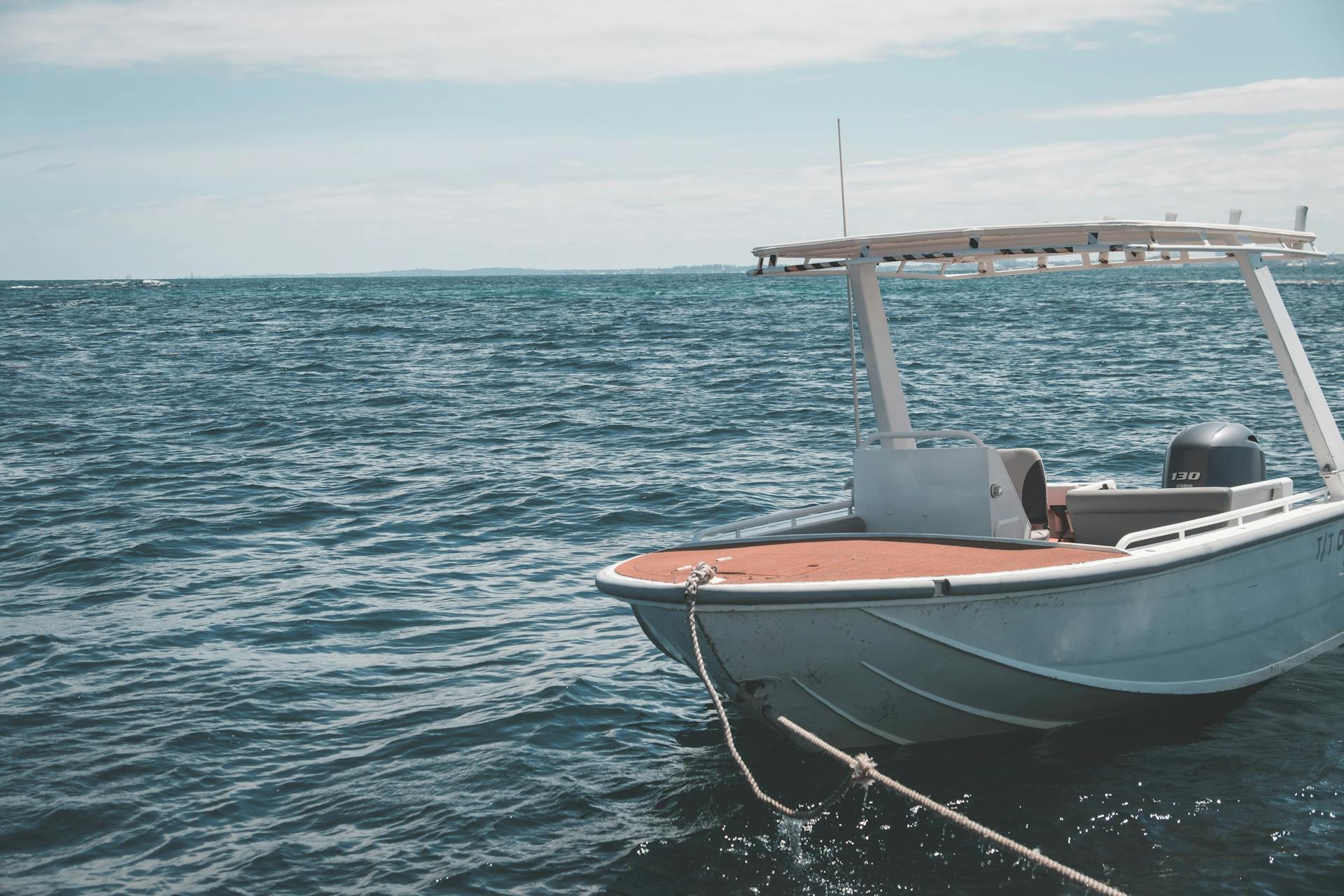
The Grain Terminal infrastructure is owned and operated by GrainCorp Ltd, and it provides all storage and handling requirements for bulk products and specialist oil-based lubricants. It has one berth available with a total length of 300m and a depth alongside of 15.65m.
Here's a breakdown of the Grain Terminal's storage and handling capabilities:
- Total storage capacity: 260,000 tonnes
- Number of gas-tight self-emptying steel bins: 30
- Combined ship loading gantry capacity: 10,000 tonnes per hour
- Road and rail receival/discharge facilities available
The wharf structure, owned by NSW Ports, can accommodate Capesize vessels to a maximum 315m LOA. Two grain gantry shiploaders have a combined nominal capacity of 5000 tonnes per hour.
Bulk Liquids Facilities (Harbour)
Port Kembla's Outer Harbour is home to two dedicated bulk liquids berths owned and operated by NSW Ports. These berths handle refined fuels and chemicals, including ethanol and sulphuric acid gas imports.
Berth 201 has direct pipeline access to a nearby storage facility, making it an efficient spot for bulk liquid storage and handling. This is a huge advantage for importers and exporters who need to move large quantities of liquids quickly.
NSW Ports' berths 201 and 206 are common user berths, which means they can handle a variety of products and clients. This flexibility is a big plus for the port and its users.
In addition to the NSW Ports facilities, there's another bulk liquid facility located in the Inner Harbour, operated by GrainCorp. This facility handles a range of liquid products, including chemicals and oils.
Here are some key details about the bulk liquids facilities in Port Kembla:
- Berths 201 and 206: common user berths handling refined fuels and chemicals
- Berth 201: direct pipeline access to a nearby storage facility
- Inner Harbour facility: operated by GrainCorp, handling chemicals and oils
Car and Container Facilities
The Port Kembla Terminal is a multi-purpose facility catering for motor vehicles, general cargo, and containers. It's located adjacent to Berths 103, 105, 106, and 107, on Yampi Way, Port Kembla.
The terminal has four berths available, with a total length of 910m and a depth alongside of 12.1m. This makes it an ideal spot for shipping and receiving large volumes of cargo.
AAT has invested in top-notch equipment to handle container and vehicle cargo, including three shore mobile harbour cranes that can lift up to 140 tonnes, and container handling equipment like forklifts and spreaders.
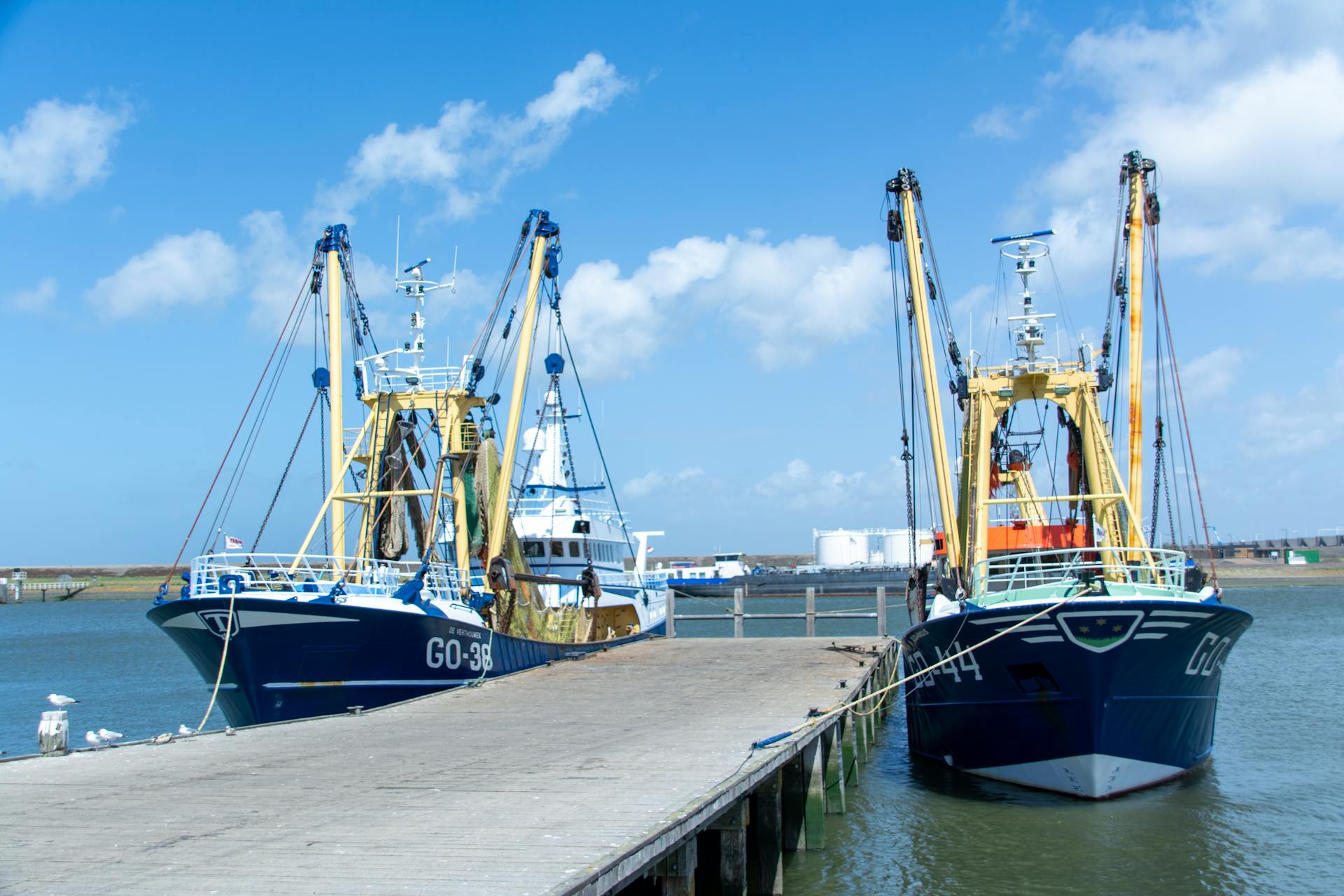
Here are some of the key features of the Port Kembla Terminal's car and container facilities:
- Undercover storage capacity of 18,000m2
- Initial lay down area for 7000 vehicles
- Break bulk and container storage area of 3 ha
- AQIS approved wash down bay available
- Designated bond storage
- Road Transport access for B Double Vehicles
- On site rail access for train lengths up to 1000m
Car Import, Cargo and Container Facility
The Port Kembla Terminal is a multi-purpose facility that caters for motor vehicles, general cargo, and containers. It's located adjacent to Berths 103, 105, 106, and 107, Yampi Way, Port Kembla.
This facility has four berths available, with a total length of 910m and a depth alongside of 12.1m. You'll also find undercover storage capacity of 18,000m2, which is perfect for storing cars and other cargo.
AAT has provided the facility with three shore mobile harbour cranes that can handle up to 140 tonnes. This is a significant upgrade from the traditional cranes you might find at other terminals.
The facility is also equipped with container handling equipment, including forklifts and spreaders. This makes it easy to load and unload containers quickly and efficiently.
If you're planning to transport cars to the facility, you'll be happy to know that there's road transport access for B Double Vehicles. This means you can easily drive your car onto the site and have it unloaded.
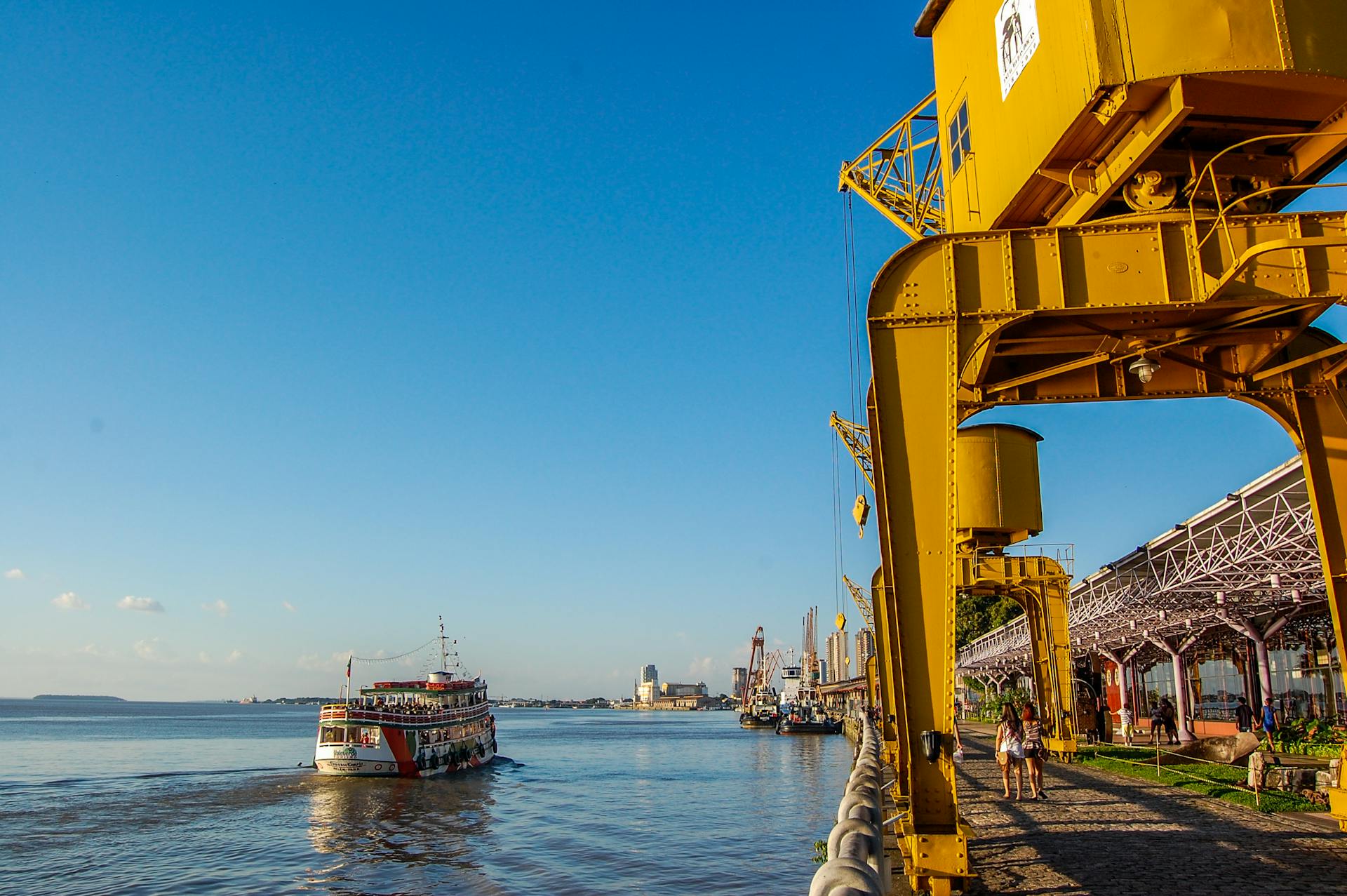
For those who prefer to transport their cars by train, the facility also offers on-site rail access for train lengths up to 1000m. This is a convenient option for those who want to transport multiple cars at once.
Here's a summary of the facility's key features:
- Total length of berths: 910m
- Depth alongside: 12.1m
- Undercover storage capacity: 18,000m2
- Shore mobile harbour cranes: 3
- Container handling equipment: forklifts and spreaders
- Road transport access: B Double Vehicles
- On-site rail access: train lengths up to 1000m
The facility also offers 24/7 onsite security, with the main entrance security controlled at all times. This provides an added layer of safety and security for your car and cargo.
No. 4 Wharf
The No. 4 Wharf at Port Kembla has a rich history dating back to 1908, when it was built to service the Electrolytic Refining & Smelting Co. and Metal Manufacturers.
It was the first wharf to be constructed at Port Kembla after the port was taken over by the government. The wharf was originally located between the No. 3 Coal Jetty and the eastern breakwater.
The jetty was extended in 1929, and it had a connection to the government rail network. This allowed for efficient transportation of goods in and out of the port.
Two electric grab cranes were installed at the wharf, suitable for unloading bulk cargoes. This was a significant upgrade to the port's infrastructure at the time.
The wharf still exists today, a testament to the port's history and evolution over the years.
Take a look at this: History of the Port of Southampton
Berth 206
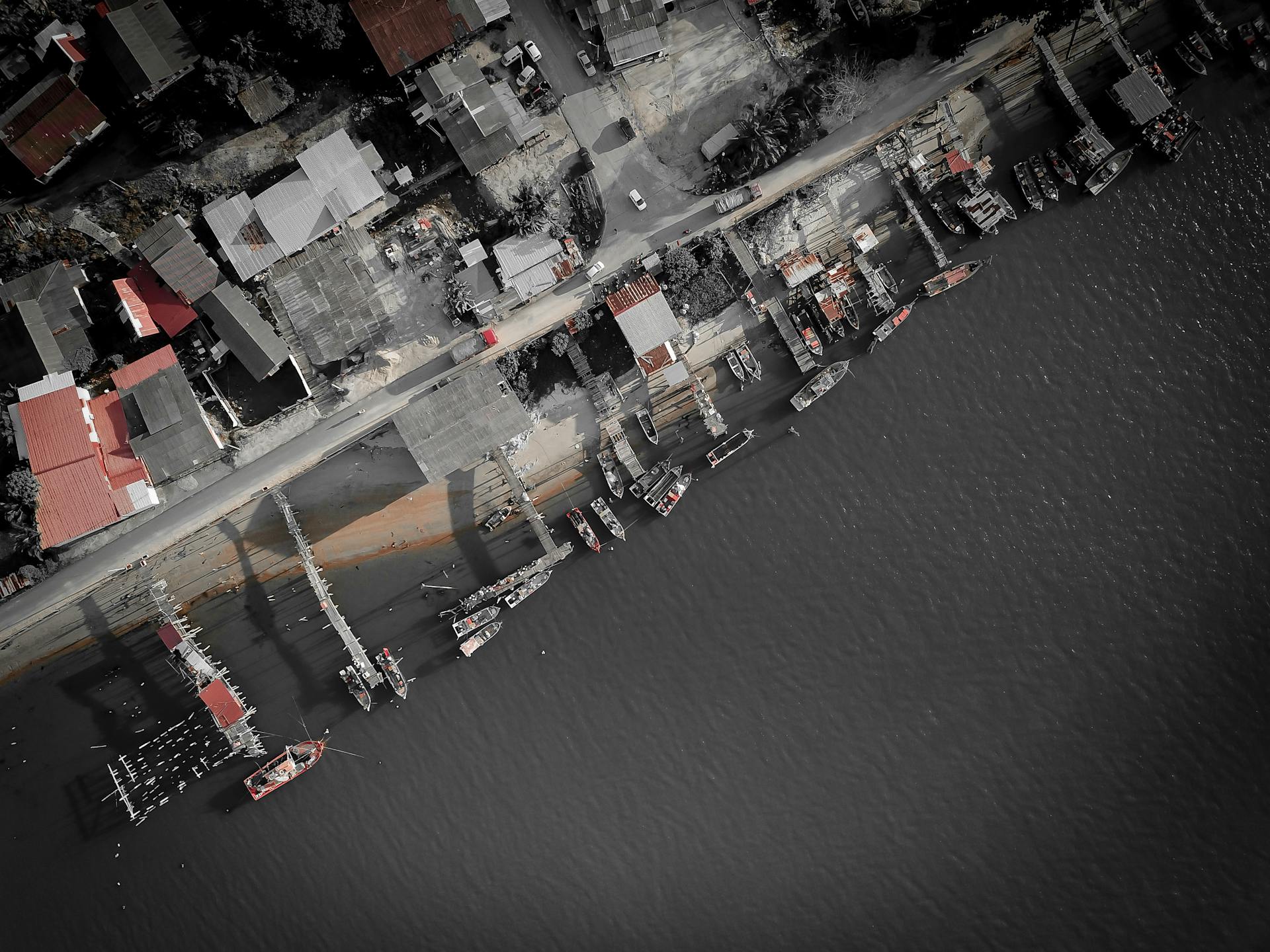
Berth 206 is a dedicated bulk liquids berth owned and operated by NSW Ports, primarily used for a range of bulk liquid products. It has an available berth length of 80m with a depth alongside of 11.25m.
To access Berth 206, you'll need to obtain certain permits and certificates, including a Marine Pilot Exemption Certificate and a Certificate of Local Knowledge. You'll also need to submit an Application for dive operations and a Mobile crane application.
Berth 206 is subject to various regulations, including Pilotage and navigation, Port charges, and Dangerous goods. You'll also need to comply with Harbour Master's Directions and Harbour Master's Instructions.
Here are some of the key documents and information you'll need to access Berth 206:
- Notices, forms and permits
- Marine Pilot Exemption Certificate
- Application for dive operations
- Certificate of Local Knowledge
- Mobile crane application
Keep in mind that Berth 206 is subject to various regulations and requirements, so be sure to familiarize yourself with the relevant information before accessing the berth.
Common User - Outer Harbour
The Common User - Outer Harbour facility is a great option for businesses looking to handle bulk and break bulk cargoes. Located off Christy Drive, Port Kembla, it's operated by Port Kembla Gateway Pty Ltd.
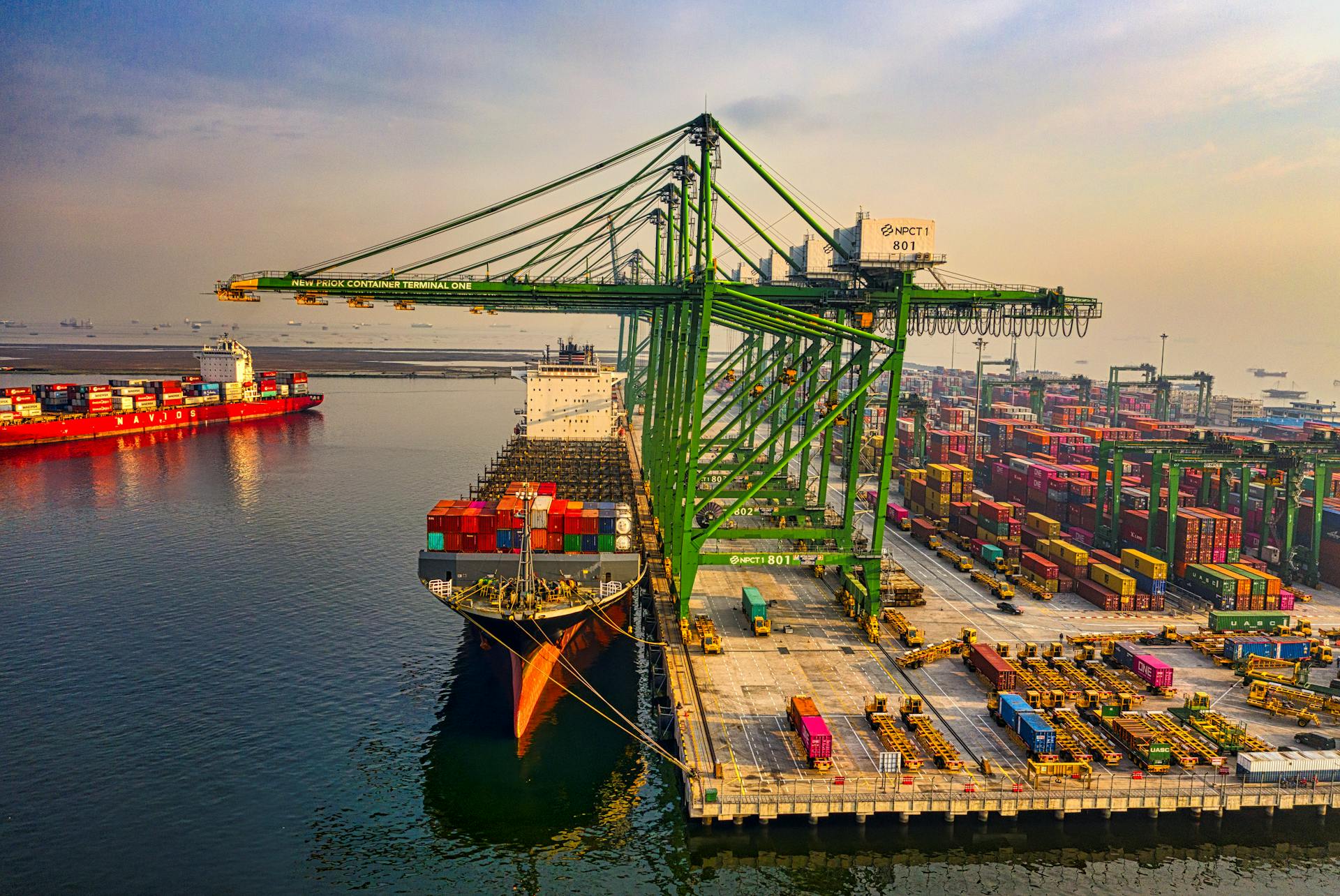
The facility operates four berths (202, 203, 204, and 205) with a total available berth length of 360m and a varying depth alongside of at least 10.05m.
Port Kembla Gateway has invested in top-notch equipment, including a bulk ship loader capable of loading at 1000 tonnes per hour. They also have undercover storage in three sheds, totaling 4000m2.
The facility's bulk ship loader is a game-changer for businesses that need to move large quantities of goods quickly. With a capacity of 1000 tonnes per hour, it's a significant advantage in the industry.
Here are some of the key features of the Common User - Outer Harbour facility:
- Available berth length of 360m with a varying depth alongside least being 10.05m.
- Undercover storage in three sheds total 4000m2
- The Gateway has a bulk ship loader capable of loading at 1000 tonnes per hour.
- 80 tonne registered weighbridge operated by personal "Smartcard"
- 35 tonne forklifts, front end loaders, water truck, 17 tonne luffing crane, grabs, hoppers
Infrastructure and Development
Port Kembla harbour has seen significant infrastructure development in recent years.
The Port Kembla Outer Harbour Development included reclamation works to create 6.9ha of additional port land, suitable for storage and handling of bulk cargoes, and the construction of Cement Australia's cement grinding mill factory.
Cement Australia commenced operations on the Port Kembla Outer Harbour Development in 2013 after the reclamation works were complete.
A detailed Environmental Assessment report was prepared, considering potential impacts on factors like sediment and water quality, hydrodynamic processes, and cultural heritage.
Environmental reviews are undertaken regularly, with independent audits to verify compliance with environmental obligations.
NSW Ports is committed to ensuring compliance with all environmental obligations.
Port Kembla is also set to become home to Australia's first LNG import terminal, with NSW Ports signing an exclusive Memorandum of Understanding with AIE to progress the development.
This development presents an opportunity for diversification and growth in port activities and the potential for new value-add services.
Environment and Compliance
Port Kembla harbour is committed to supporting and maintaining the natural environment values of the area. The port is situated within Port Kembla Harbour and is surrounded by a variety of environmental and social features.
The harbour works in tandem with its tenants to manage the environment responsibly, including managing emissions impacts to air quality from bulk cargo handling. This is a crucial step in minimizing the port's ecological footprint.
One of the ways the harbour supports environmental conservation is by managing stormwater and water quality in Port Kembla's Inner Harbour through treatment measures. This helps to protect the local ecosystem and maintain the harbour's water quality.
The harbour is also actively involved in the conservation and maintenance of habitat for the Green and Golden Bell Frog. This is a great example of the harbour's commitment to preserving biodiversity in the area.
The harbour maintains a dialogue with regulators and local residents to ensure management practices are in line with legal requirements and community expectations. This helps to ensure that the harbour is operating in a responsible and sustainable manner.
Some of the key environmental initiatives at Port Kembla harbour include:
- Working in tandem with tenants to manage the environment responsibly
- Supporting improvements to stormwater and water quality in Port Kembla's Inner Harbour
- Conservation and maintenance of habitat for the Green and Golden Bell Frog
- Active maintenance of locally significant heritage items
The harbour is also responsible for ensuring compliance with the Conditions of Approval for the Port Kembla Outer Harbour Development. This involves managing the environmental impact of the construction and operation of the facility, as well as ongoing community engagement.
Community and Economy
Port Kembla harbour is a thriving hub of activity, and its community and economy are a big part of that.
99% of the Port Kembla workforce live locally, which speaks to the strong connection between the harbour and the surrounding community.
The harbour is a major employer in the area, with many residents relying on it for their livelihoods.
We support a range of community initiatives in the local area, including the delivery of local school programs and sponsorship of surf-life saving initiatives.
This commitment to the community is reflected in the harbour's management and maintenance of public access areas, such as the Eastern Breakwall and Port Kembla Heritage Park.
These areas are not only beautiful spots to visit, but they also provide important community spaces for locals to gather and enjoy.
By engaging with the wider Port Kembla community through the Port Kembla Heritage and Environment Group, the harbour is able to stay connected with the people it serves.
To stay up-to-date on harbour news and initiatives, you can sign up for Port Kembla community news and notifications.
Facilities and Services
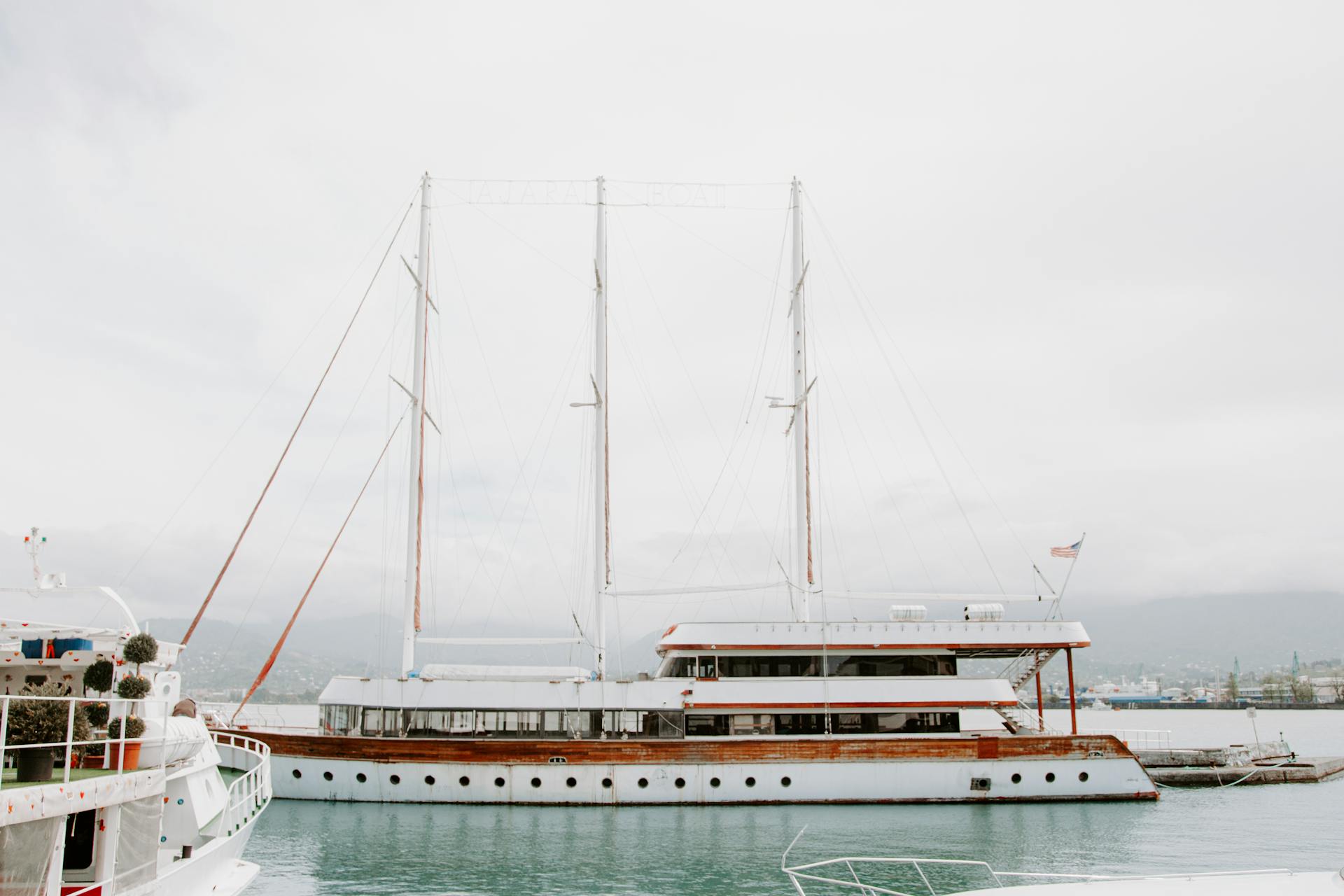
Port Kembla harbour offers a range of facilities and services to cater to different types of cargo and vessels.
The Outer Harbour is home to four berths, including berths 202, 203, 204, and 205, which are primarily used for bulk and break bulk cargoes. These berths have an available length of 360 metres with a varying depth alongside.
The berths are constructed of timber, which is a durable and long-lasting material. Extensive undercover storage capacity is also available at the facility.
Australian Amalgamated Terminals (AAT) operates a multi-purpose facility in the Inner Harbour, catering to motor vehicles, general cargo, and containers. This facility has four berths available with a total length of 910m and a depth alongside of 12.1m.
AAT's facility also boasts undercover storage capacity of 18,000m2, initial lay down area for 7000 vehicles, and a further 3 ha for break bulk and container storage.
Capabilities
Port Kembla is a 24/7 operation, meaning it's always open and ready to handle cargo. This level of availability is crucial for ensuring that trade and commerce can move smoothly, without disruptions.
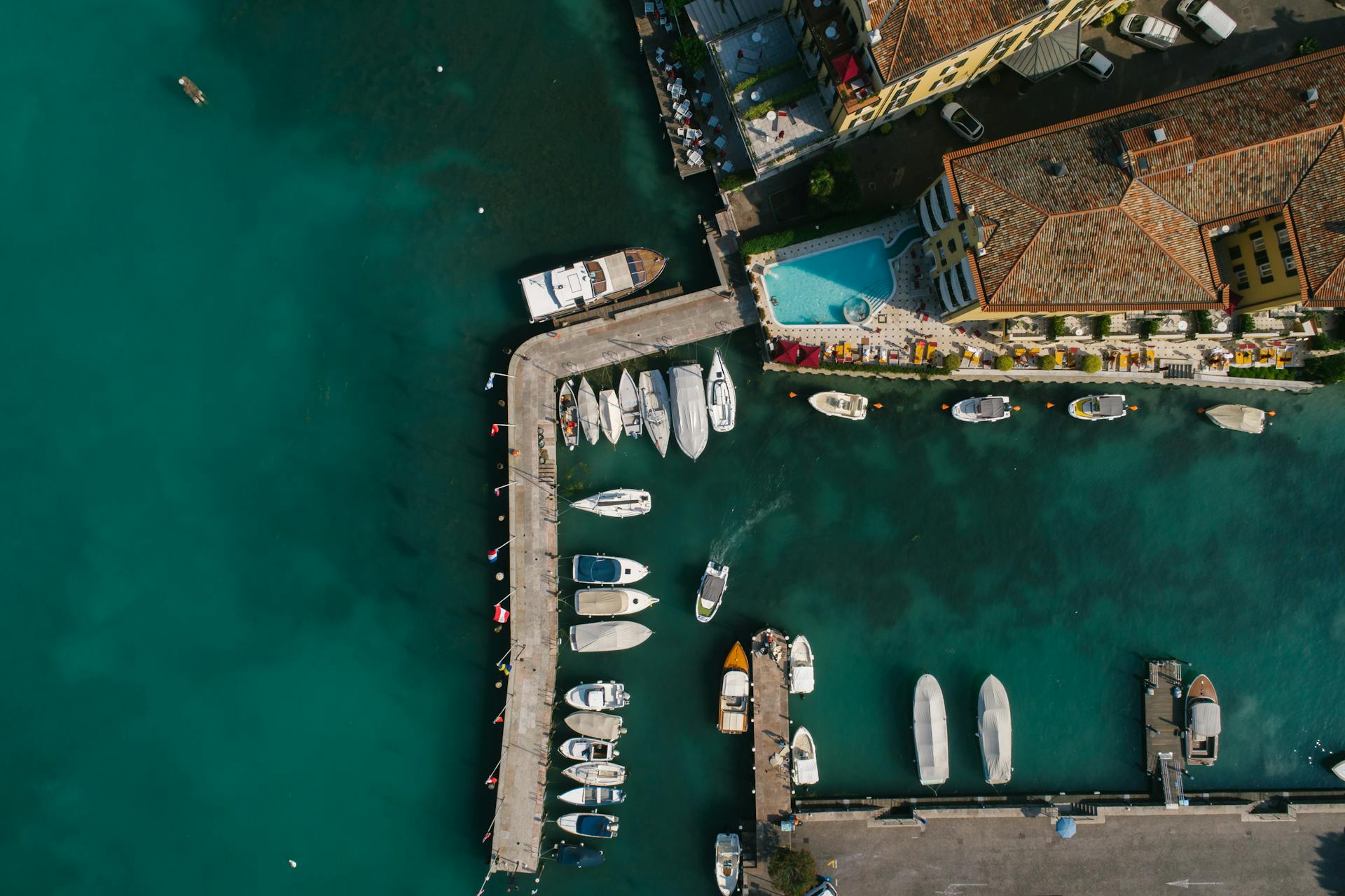
The port has the capacity to handle new trades and increased volumes of existing trades. This flexibility is a major advantage, allowing the port to adapt to changing market conditions and customer needs.
Port Kembla is equipped to handle large cargo vessels, which is a testament to its capabilities and infrastructure. This is particularly important for facilitating trade and commerce.
The port's deep water shipping channel and berths require minimal maintenance dredging. This is a significant advantage, as it reduces the need for frequent and expensive dredging operations.
Here are some key statistics about Port Kembla's capabilities:
Berth 201
Berth 201 is a dedicated facility in Port Kembla's Outer Harbour. It's capable of discharging fuel products. The available berth length is 200m with a depth alongside of 10.9m.
Pilotage and navigation are essential for safe passage. You'll need to follow the Harbour Master's directions and instructions. Be aware of any dangerous goods on board and check the port passage plan.
Port charges will apply for using Berth 201. You'll also need to comply with vessel traffic services (VTS) regulations. Here are some key notices and forms you'll need to be aware of:
- Notices to Mariners
- Certificate of Local Knowledge
- Certificate of Capacity
- Pilot ladder competency training
FSRU Secured
Australian Industrial Energy has secured a critical component of its Port Kembla Gas Terminal - a Floating Storage and Regasification Unit (FSRU) from Norway’s Höegh LNG.
The FSRU is a state-of-the-art 300-metre-long vessel with a storage capacity of 170,000m3, which will be permanently moored at Berth 101 in Port Kembla’s inner harbour.
The FSRU has the capability of re-gasifying liquefied natural gas that can then be injected into a pipeline to the existing east coast gas transmission network, approximately 10 kms away.
This critical component will form part of the final port infrastructure design plans, addressing NSW Government’s planning assessment and development approval requirements.
AIE has secured the FSRU under a charter contract, giving them the right to lease the vessel for an extended period.
Frequently Asked Questions
What is Port Kembla famous for?
Port Kembla is a major international trade hub, serving industries such as agriculture, construction, and mining. It's also a key player in New South Wales' motor vehicle imports and grain and coal exports.
What happens at Port Kembla?
Port Kembla is a major economic hub that imports vehicles, exports grain, and supports the region's steel and mining industries. It's a vital gateway for trade and commerce in southern and southwestern NSW.
Who owns Port Kembla?
NSW Ports manages Port Kembla, which is one of the key ports in the region, handling a significant volume of trade each year.
Is Port Kembla a nice place to live?
Port Kembla offers a traditional Australian beachside lifestyle with beautiful beaches and recreational opportunities. It's an affordable and attractive option for young families seeking a relaxed coastal living experience.
Featured Images: pexels.com
